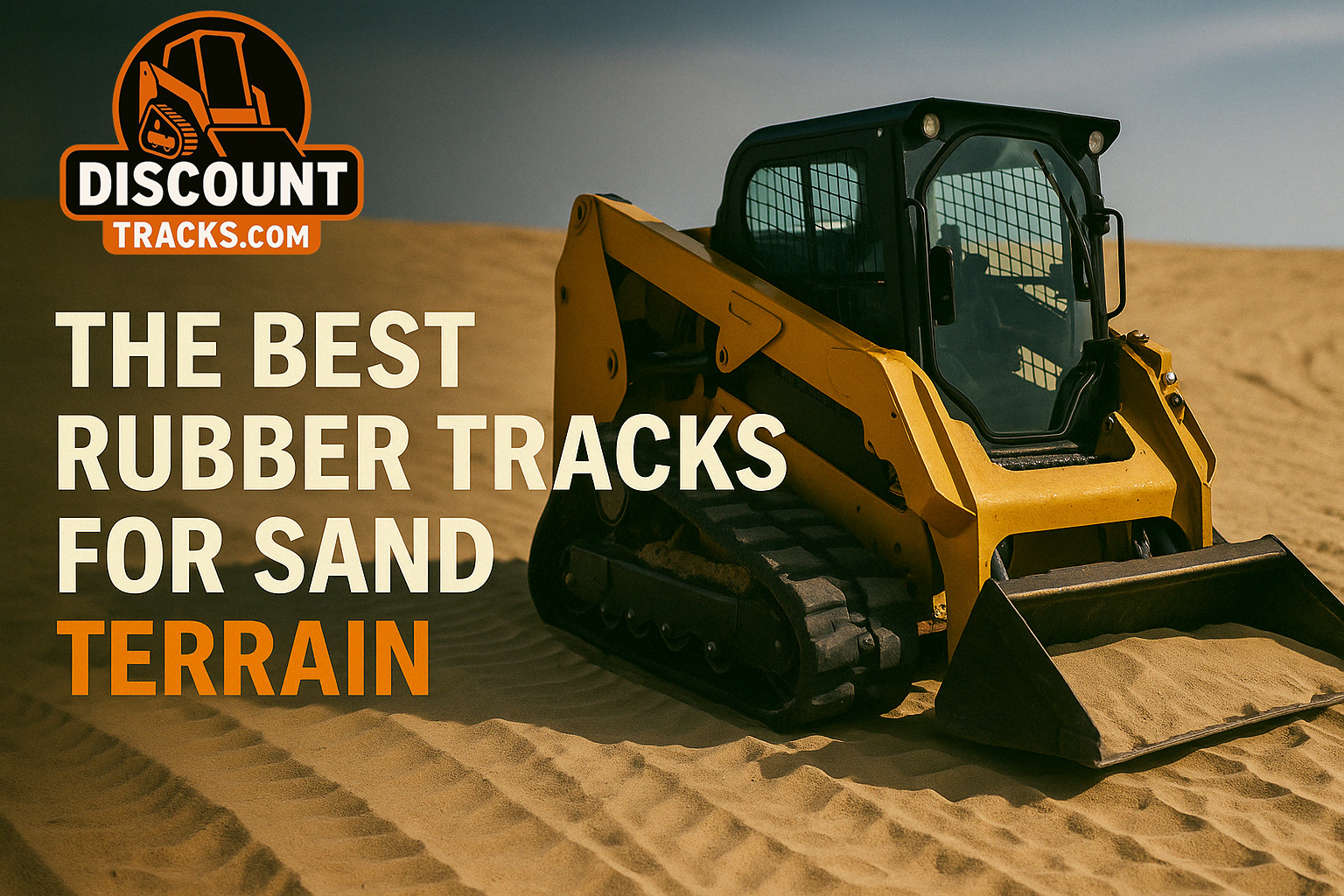Sand might seem soft, but it presents serious challenges for compact equipment. Loose, shifting grains offer poor traction and can cause machines to sink or spin. For operators working on beaches, in coastal construction, or sandy agricultural zones, choosing the best rubber tracks for sand is essential.
Standard rubber tracks often struggle in these environments. They can dig in too aggressively, build up heat from friction, or wear out quickly from sand abrasion. This guide breaks down the ideal features of sand terrain tracks, helping you select tread patterns and features designed for flotation, traction, and durability.
Why Sand Demands Specific Track Characteristics
Sandy terrain requires rubber tracks with unique design elements to perform effectively:
- Low Traction: Sand lacks a firm surface, so standard lugs may spin or slip.
- Sinking Risk: Equipment weight can cause narrow tracks to dig in, leading to bogging.
- High Abrasion: Fine sand grains are gritty and wear rubber and metal quickly.
- Heat Buildup: Friction from spinning can increase track temperature, accelerating wear.
To operate efficiently, tracks must provide high flotation, resist abrasion, and offer some grip without excessive digging.
Key Features & Tread Patterns for Optimal Sand Performance
At Discount Tracks, we’ve developed a helpful Tread Pattern Guide to make track selection easier. Let’s look at what it says about sand…
Interpreting the Tread Pattern Guide for Sand
The Sand column in our Tread Pattern Guide highlights which tread designs perform well in loose materials.
- Orange Check = Best
- White Check = Better
Several patterns are marked as ideal for sand conditions, offering solid flotation and control. Let’s break down their strengths.
Recommended Patterns for Sand (Based on the Guide)
C-Block & Block Patterns ✅ Best
These patterns provide:
- Large surface contact for better flotation
- Stability with moderate cleanout
- Good performance on loamy or loose sand
Zig Zag & Bar Patterns ✅ Better
These offer:
- Some forward “paddle” or push in loose conditions
- Good cleanout and edge grip
- Less ground pressure than deep-lugged patterns
Why These Patterns Work in Sand
- Flotation: Wide, flatter lug designs spread machine weight to prevent sinking.
- Scoop Effect: Zig Zag and Bar styles can mimic paddling action for forward momentum.
- Balanced Design: These tracks are not overly aggressive—they don’t dig trenches like mud tracks might.
The Importance of Track Width
Wider tracks = less ground pressure. For sand terrain tracks, this is key:
- Reduces sink-in risk
- Helps the machine “float” over loose surfaces
- Improves stability on soft ground
Always consider choosing the widest compatible track for your machine when working frequently in sand.
Durable Rubber Compound
Sand is abrasive. Even though it’s loose, it wears down:
- Tread surface
- Undercarriage components
- Embedded cords
Look for abrasion-resistant rubber and strong internal construction to withstand gritty environments.
Operational Tips for Working in Sand
Even with the best rubber tracks for sand, smart technique improves performance:
- Avoid tight turns: Prevents de-tracking and digging
- Keep momentum: Stopping and starting increases risk of sinking
- Check tension frequently: Loose or overtight tracks can worsen problems
Discount Tracks: Smart Choices for Sand Applications
Discount Tracks offers multiple tread styles rated for sand terrain in our official Tread Pattern Guide. Whether you’re operating a:
- Skid steer on dunes
- CTL at the beach
- Mini excavator near water or on sand lots
…we offer rubber tracks designed to:
- Maximize flotation
- Deliver traction in loose material
- Stand up to abrasion
From Block and Bar patterns to abrasion-resistant compounds and wide-width options, our tracks are built to perform and priced to compete.
Our knowledgeable team can help you select the right tread and width combo for your sandy terrain needs.
Conclusion: Choose Wisely for Sand Success
Loose sand requires tracks that float and grip—not dig and spin. Choosing a tread with the right balance of surface area, paddle effect, and durability ensures your machine performs.
Reference tools like the Tread Pattern Guide to find the perfect match for your sand work.
Don’t let sand slow you down!
Explore Discount Tracks’ collection of high flotation, abrasion-resistant tracks ideal for sand applications. Visit DiscountTracks.com or contact our experts to find the best rubber tracks for sand that deliver value, traction, and long-term performance.


